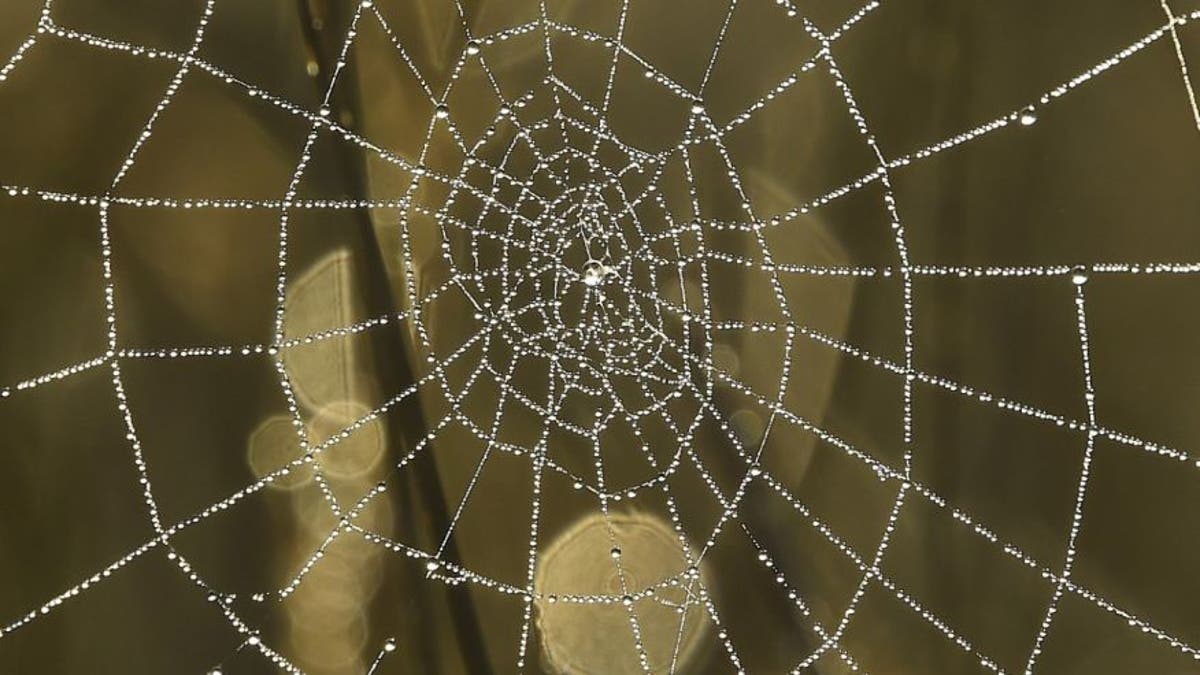
File photo - Dew drops on a spider web reflect the morning sun in Richmond Park in west London, Britain, Oct. 2, 2015. (REUTERS/Toby Melville)
Blame it on Spider-Man fandom if you want, but we've always been fascinated by the idea of someone creating synthetic spider webbing in a lab.
That is the goal of a new research project at the Swedish University of Agricultural Sciences (SLU) and Karolinska Institutet, where scientists have developed a technique for not only producing artificial spider silk using bacteria but doing so in large, potentially industrial quantities.
"We designed an extremely soluble spider silk protein, by combining two soluble domains from different spider species, which can be dissolved at 500 mg/ml, thereby mimicking native spider silk fibers," researcher Anna Rising told Digital Trends. "Our protein can also be expressed at high yields in bacteria, which facilitates recombinant production. Moreover, we designed a simple yet very efficient spinning device that recapitulates the pH drop in the spider silk gland. Together, these advances allowed the first biomimetic spinning of artificial spider silk."
According to Rising, these biomimetic fibers can be used as scaffolds for cell culture, thereby generating cells for use in tissue engineering. "Another possible application is high-performance textiles, though this is not our area of expertise," she said.
More From Digital Trends
So what's next for the project, and when can we commence our crime-fighting career as a wisecracking superhero who gets to hang out with Robert Downey Jr.?
"We are now working on improving the mechanical properties of the fibers by using protein engineering and optimization of the spinning process," Rising said. "Also we aim to make defined three-dimensional structures for tissue engineering applications."
That may not answer the superhero question, but the work is undoubtedly an exciting advance for materials science. A paper describing the research, entitled "Biomimetic spinning of artificial spider silk from a chimeric minispidroin," was recently published in the Nature journal, Chemical Biology.
